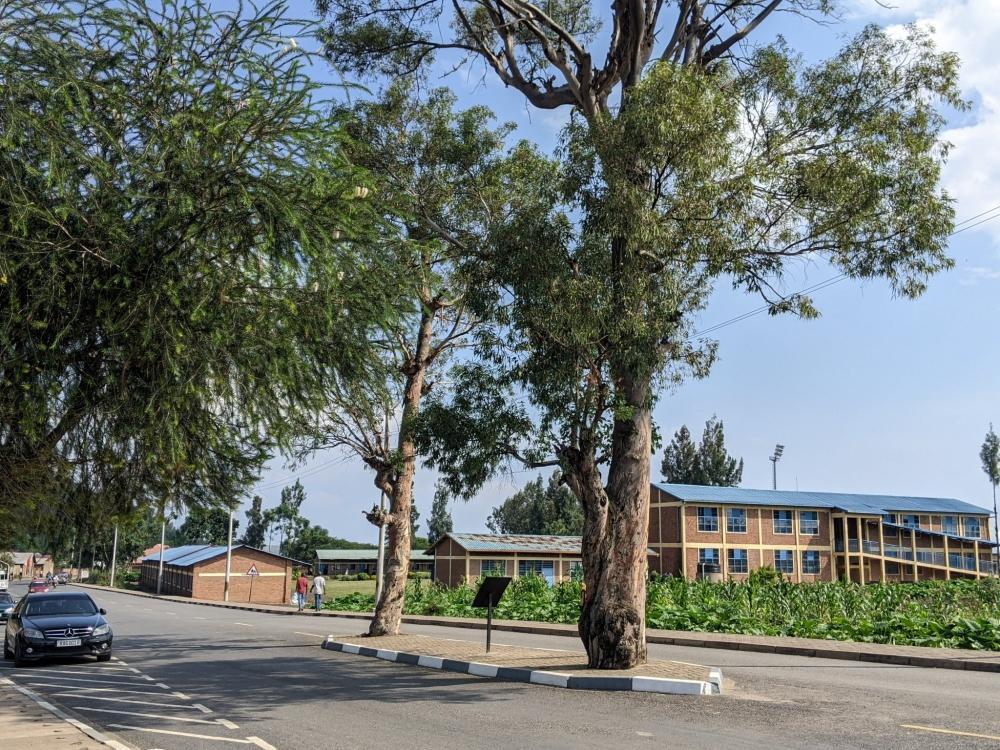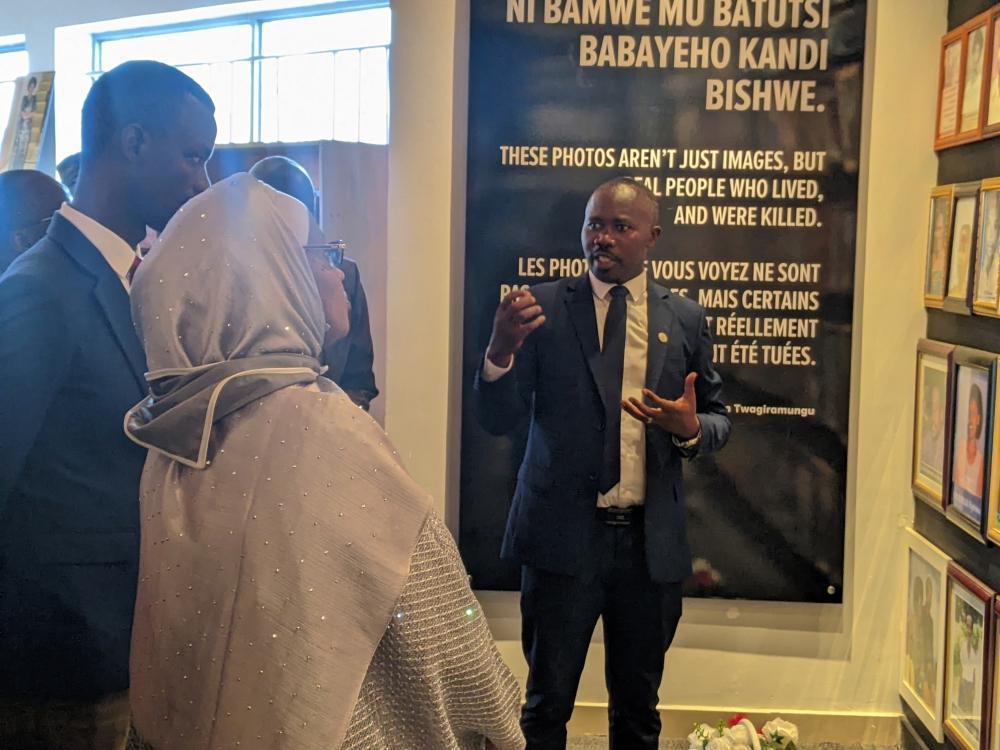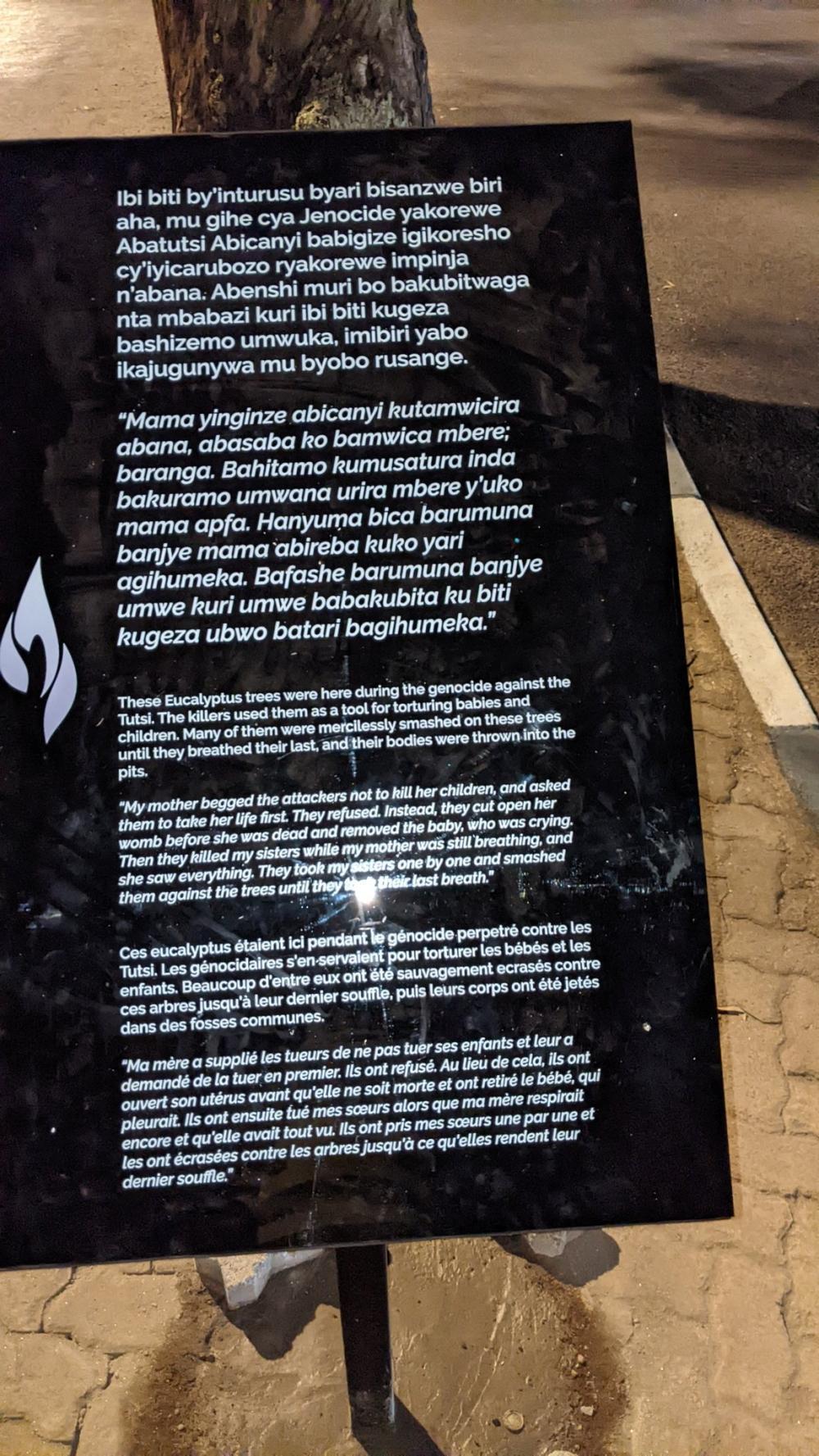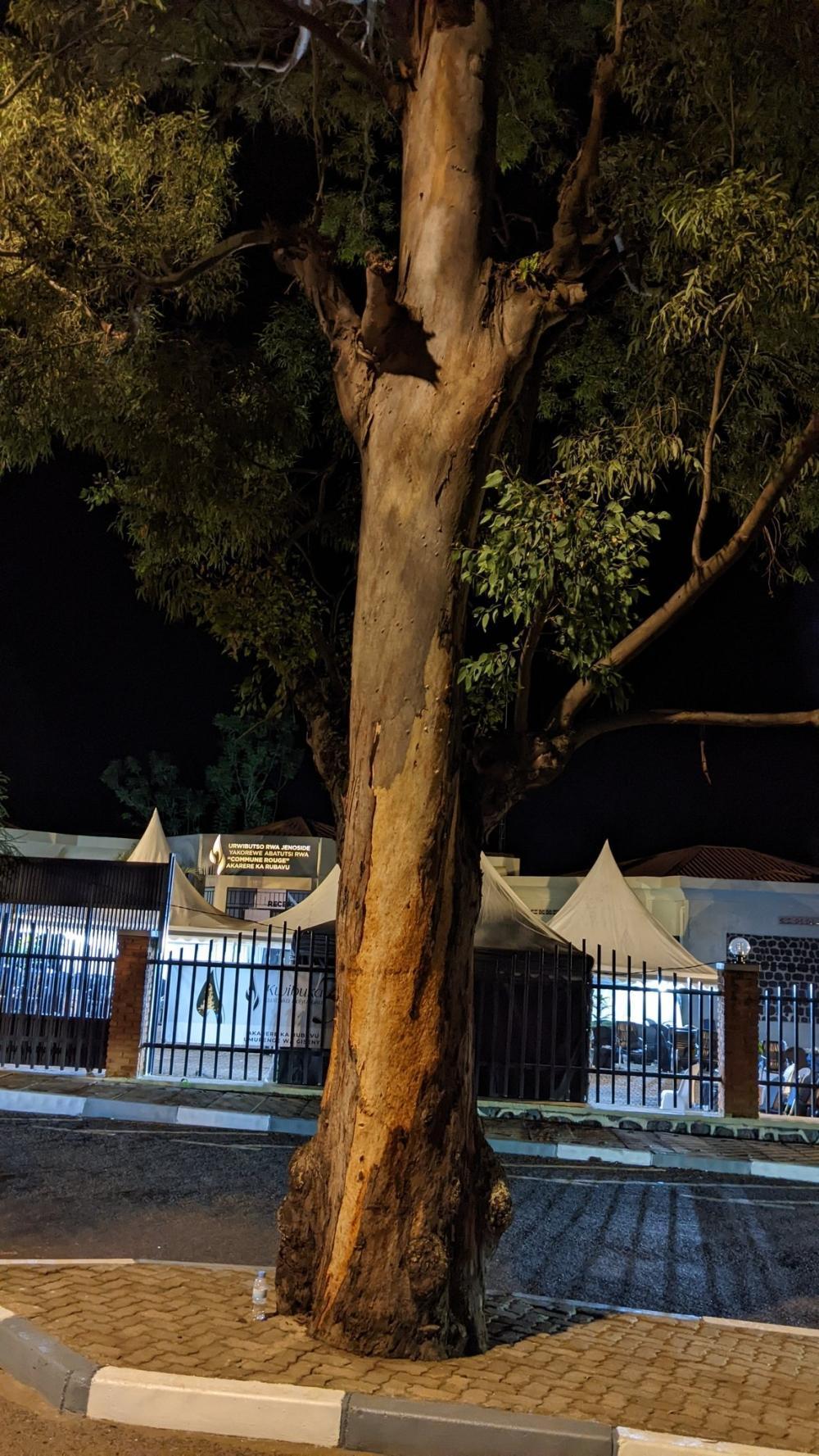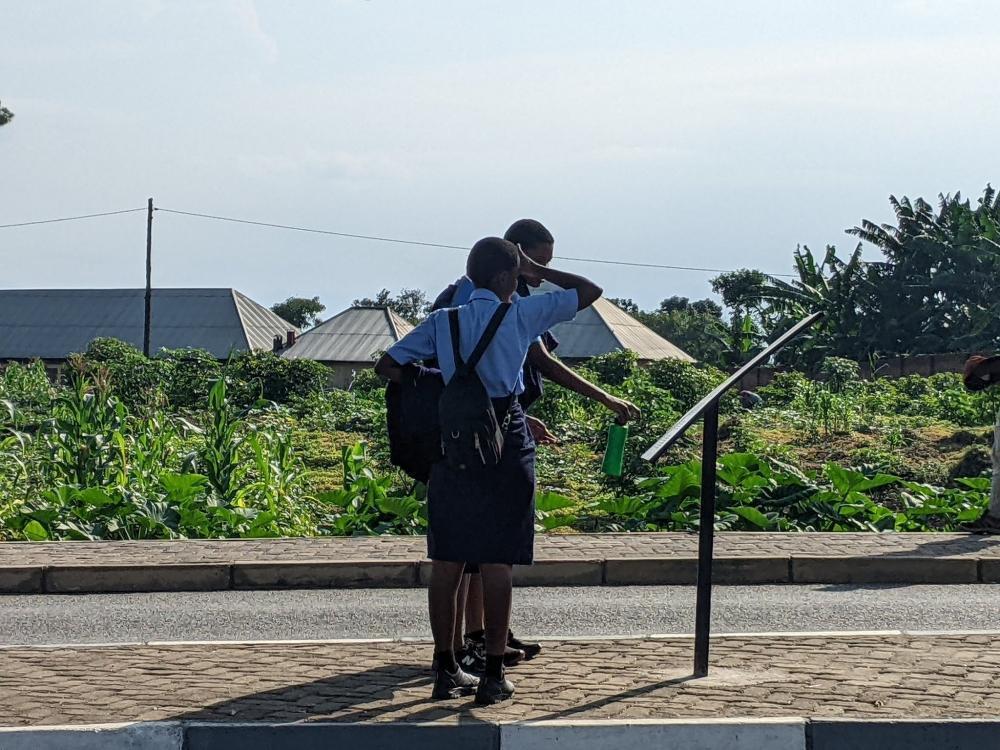Africa-Press – Rwanda. Two eucalyptus trees stand in the middle of a public road at Commune Rouge Genocide Memorial in Rubavu District — uncut, untouched, and deeply symbolic. These trees are silent witnesses to one of the most horrific atrocities of the 1994 Genocide against the Tutsi.
The memorial, located in Ruriba Village, Rubavu Cell, Gisenyi Sector, serves as the final resting place for more than 5,000 genocide victims from the former Gisenyi Prefecture. Many others killed here had fled from surrounding areas, hoping to reach safety in neighbouring DR Congo.
This area is historically significant, not just for the scale of the atrocities, but also because it was home to powerful figures in the former regime, including President Juvénal Habyarimana. Many members of his inner circle, known as the Akazu, also hailed from this region.
According to records and testimonies compiled by Ibuka, the umbrella association of genocide survivors, Gisenyi was a hub for planning and organising the genocide. Tutsi residents from areas such as Mutura, Rwerere, Bigogwe, Kayove, Nyamyumba, and Kibirira (now in Ngororero District) were gradually rounded up and killed.
Mulindwa takes a group of visitors on a guided tour of the memorial sites at Commune Rouge.
Their bodies were dumped in mass graves pre-dug in the Gisenyi cemetery to hide evidence, under the false pretext that they were Inkotanyi (RPF fighters).
Trees of Horror
The two eucalyptus trees at Commune Rouge hold a particularly gruesome legacy. “These are terrible trees because they were used to kill innocent babies,” said Gérard Mbarushimana, head of Ibuka in Rubavu. “The perpetrators would strike infants against the tree trunks, choosing not to waste weapons like machetes.”
The site was the scene of horrific crimes during the 1994 Genocide against the Tutsi.
Mbarushimana explained that leaving the trees untouched in the middle of a paved road is deliberate — a powerful message that the genocide was a targeted, systematic attempt to erase an entire group of people.
Personal testimonies
Hussein Twagiramungu, a genocide survivor who was a 27-year-old teacher in 1994, recounted the horror: “My stepmother was among those dumped at Commune Rouge. The trees by the entrance were used for killing infants. Babies were grabbed by the legs and slammed against the trunks before being thrown into pits.”
Testimonies like his are documented inside the memorial, along with photos of the trees and the atrocities committed beneath them.
Nasoro Maguru, another survivor, recalls: “These trees in front of the memorial — my big brother was killed there. They pinned him to the tree and stabbed him with sharp tools until he died.”
A Living Memorial
Rubavu Mayor Prosper Mulindwa said the trees are more than environmental features — they are living monuments. “Preserving these trees is not just about conserving nature, it’s about preserving memory,” he said. “They represent a physical link to the past that urges us never to forget.”
He added: “Each year, as we commemorate the genocide, these trees serve as enduring reminders of the horrors of hatred — and the urgent need for unity, peace, and humanity.”
Rubavu District has pledged to preserve the trees permanently as symbols of remembrance and a national vow of “Never Again.”
A monument was installed between the two trees as part of documenting the tragic history that happened in the area.
Children were smashed against the trunks of the trees during the Genocide against the Tutsi.
Students read about the history associated with the preservation of the trees on their way home.
For More News And Analysis About Rwanda Follow Africa-Press

